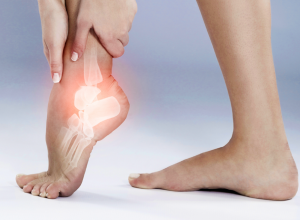
Osteomyelitis
Osteomyelitis is a term used to describe infection or inflammation of the bone and/or bone marrow. The length of time the infection has been present, and whether or not sclerosis (increased density of bone) or pus accompanies the infection usually determines the type of OM a person has.
Symptoms
Usually osteomyelitis is symptom-free, but sometimes the affected person may experience fever or chills, as well as pain, redness and swelling in the area of the infection.
Causes
Bone is usually resistant to bacterial infection, but certain diseases, injuries and conditions can lead to osteomyelitis. Most cases in adults are caused by bone-exposing injuries, debilitation, intravenous drug use, infectious root-canaled teeth, placement of prostheses and other diseases. However, many cases are a result of bacteria originating in or being carried through the blood (hematogenous) — especially in children. Examples of this include germs from pneumonia or a urinary tract infection spreading via the blood to weakened spots in the bone.
The vertebrae and the pelvis are the most commonly affected areas in adults, but due to their lower level of blood supply, the tibia and the femur are bones that are also often affected (as are the humerus, maxilla and mandibular bones). People who have diabetes are susceptible to developing osteomyelitis in their feet if they have foot ulcers.
The bacteria most commonly associated with osteomyelitis is Staphylococcus aureus (Staph), which is normally present on the skin of human beings. 90% of osteomyelitis cases in children are caused by Staphylococcus aureus, while the infections in adults are typically a mix of organisms including Staph, Pseudomonas aeruginosa, E. coli and Serratia marcescens.
Treatment
Medical websites like WebMD, MedScape and MedicineNet agree that the typical course of treatment for osteomyelitis is a combination of surgery to remove any parts of the bone that have died followed by aggressive antibiotic treatment (usually intravenously).
Notice concerning medical entries:
Articles having medical content shall serve exclusively for the purpose of general information. Such articles are not suitable for any (self-) diagnosis and treatment of individual illnesses and medical indications. In particular, they cannot substitute for the examination, advice, or treatment by a licensed physician or pharmacist. No replies to any individual questions shall be effected through the articles.






